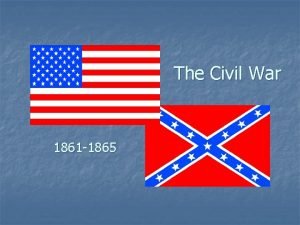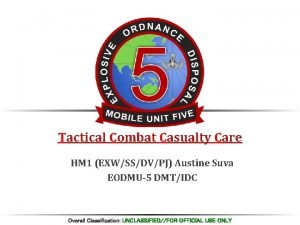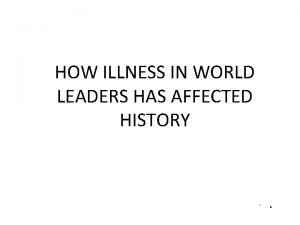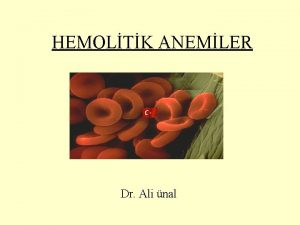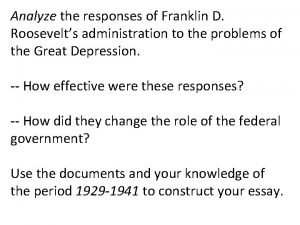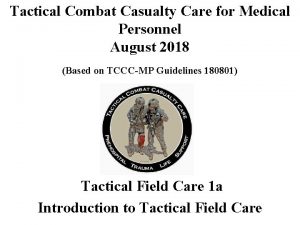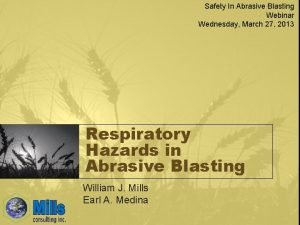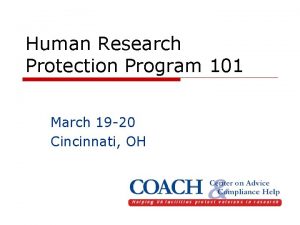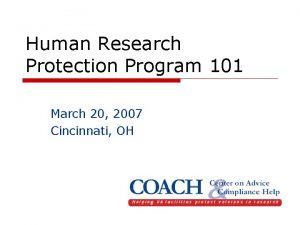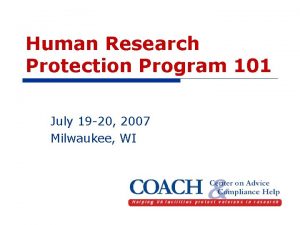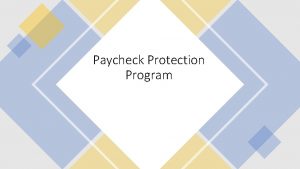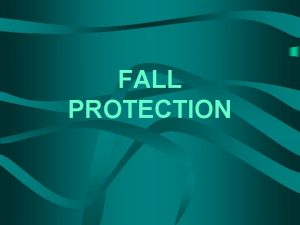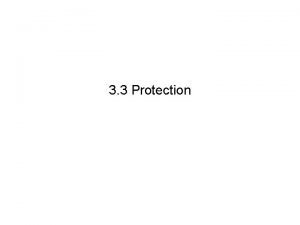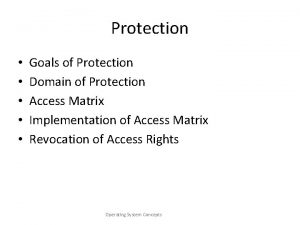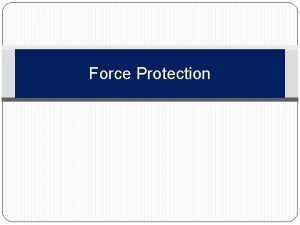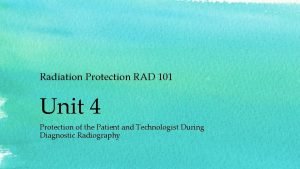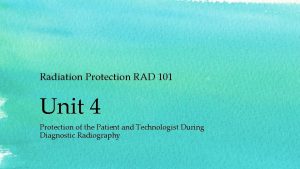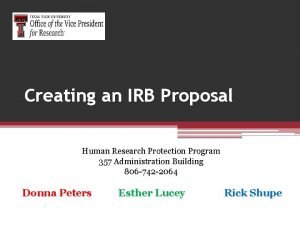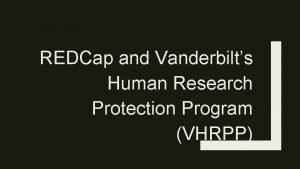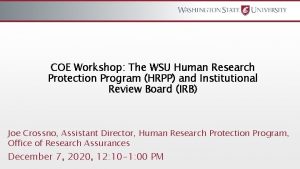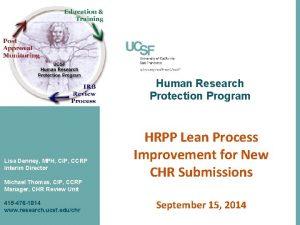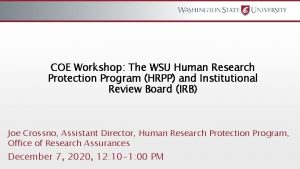Human Research Protection Program 101 March 19 20







































- Slides: 39

Human Research Protection Program 101 March 19 -20, 2007 Cincinnati, Ohio

The Drug Side of FDA Regulations, with a Few Mechanics C. Karen Jeans, MSN, CCRN COACH Project Analyst

What This Talk Will Cover • The mystique of the Investigational New Drug Application (IND) • • • IND Emergency IND Treatment IND Off Label What is FDA looking for when Auditing Clinical Investigations?

Introduction to FDA • U. S. Food and Drug Administration • Over 10, 000 employees • Key Branches • Center for Drug Evaluation & Research (CDER) • Center for Biologics Evaluation & Research (CBER) • Center for Devices and Radiological Health (CDRH)

FDA Regulates Products • Drugs, biologics, medical devices (diagnostic and therapeutic), foods: nearly 25% of the U. S. economy • FDA has responsibility for clinical investigations of FDAregulated products • Irrespective of study funding (unlike OHRP) • Irrespective of study location within the U. S. • Irrespective of whether for commercialization/marketing or for scientific knowledge


How Did it All Begin? • 1937: Sulfanilamide – the first “wonder drug” for strep throat and gonorrhea • Made into Elixir of Sulfanilamide • Resulted in 107 deaths • No laws regarding safety • Congress got involved

Levels of Authority at FDA • Law: Passed by Congress; Governs the U. S. Public AND FDA • Federal Food, Drug, and Cosmetic Act • Regulation: Promulgated by FDA to implement the law; Carries the force of law • Guidance: FDA’s best advice; Alternate methods may be used to meet regulation

Key FDA Regulations Governing the Conduct of Clinical Trials • FDA regulations directed towards protection of human research subjects • 21 CFR Part 50: Informed Consent • 21 CFR Part 56: IRB Regulations • These regulations are near-identical to the “Common Rule” which governs protection of subjects in federally funded research

Key Regulations Governing the Conduct of Clinical Trials Regulations supporting FDA’s unique product application review responsibilities and the Agency’s broad public protection mission • • • 21 21 21 CFR CFR CFR Part Part 312: 812: 314: 814: 11: 54: IND Regulations (drug) IDE Regulations (device) NDA Regulations (drug) PMA Regulations (device) Electronic Records/Signatures Financial Disclosure

Which Regulations Apply? All three: if VA research involves a FDA regulated product in a project supported or conducted by HHS or conducted in an institution that agrees to review all research under HHS regulations HHS FDA VA

A Few Differences and Quirks Definitions • Research (HHS and VA) vs. Clinical Investigation (FDA) • Human Subject: Recipient of test article or control (FDA) vs. DHHS and VA • Principal Investigator vs. Sub-Investigator: FDA vs. DHHS and VA • Investigational New Drug: FDA vs. VA

What is an Investigational New Drug (IND) Application? • Affirms a body of knowledge about the manufacturing, pharmacology, and toxicology of the drug to support its use in human testing • Requires that the clinical investigation(s) be performed in accordance with Good Clinical Practice (GCP) • Provides an additional level of protection through FDA oversight • An IND is required when an unapproved drug or biologic is used in a clinical investigation

What Does it Mean?

Is an IND always required? • No IND is needed when an approved product is used in the course of medical practice (even for an indication different from the approved indication) • But an IND may be required when an approved product is used in a clinical investigation based on use of the study information or based on increased risk • Even when exempt from an IND, IRB review and Informed Consent are required

FDA Regulations: Off-Label Use • FDA-approved products (i. e. marketed products) may be used by authorized prescribers outside of labeled indications for the practice of medicine • Such use in research (i. e. , as part of a systematic investigation designed to contribute to generalizable knowledge) requires IRB review • Such use intended to support a change in labeling requires IRB review and an IND

How Does One Get an IND? • Submit an Application to FDA with 8 components: • • Cover Sheet and Form FDA 1571 Table of Contents Introductory Statement and General Investigational Plan Clinical Protocol Chemistry, Manufacturing and Control Information Pharmacology and Toxicology Information Previous Human Experience Additional Information

When Does the IND Go Into Effect? • FDA notifies sponsors in writing the date it receives the IND application • 30 -day rule • Earlier notification • Clinical hold 21 CFR 312. 40(b)

The Special INDs: Emergency and Treatment • Emergency INDs are used for emergency use of a test article regulations 21 CFR 50. 23, 56. 102(d), 56. 104(c), 312. 36 • Treatment INDs are used for treatment protocols or treatment IND 21 CFR 312. 34 • Neither of these are INDs used to support marketing

Emergency IND • Intended subject does not meet the criteria of an existing study protocol • Approved study protocol does not exist • Manufacturer cannot make the unapproved investigational drug or biologic available under the company’s IND • FDA request by telephone or other rapid communication means

Now that you have the Emergency IND, What do you do with it? • Emergency use of a Test Article Regulations • Use of a test article on a human subject • in a life-threatening situation • no standard treatment is available • there is not sufficient time to obtain IRB approval 21 CFR 56. 102(d)

Human Subject Severely debilitated or life-threatening condition Standard acceptable treatment unavailable, and Sufficient time not available to obtain IRB approval IND obtained by investigator from sponsor or authorized by FDA Informed Consent obtained from participant No Informed Consent can Be obtained from participant Written certification by investigator and non-study participating physician or independent determination of investigator Test Article administered IRB Report within 5 working days

FDA Regulations Usually Involved with Emergency IND • Emergency IND regulations • Emergency Exemption from Prospective IRB Approval • Exception from Informed Consent Requirements • Targeted to Investigators • Not to be confused with Planned Emergency Research

Why Does One Need a Treatment IND? The investigational drug • • • intended to treat a serious or immediately lifethreatening disease; no comparable or satisfactory alternative drug or otherapy available to treat that stage of the disease in the intended patient population; under investigation in a controlled clinical trial under an IND or the clinical trials have been completed; sponsor is actively pursuing marketing approval of the investigational drug with due diligence. Confusion about terminology: “humanitarian use”

Treatment INDs • Require IRB approval • Sponsor may apply for a waiver of local IRB review • Require informed consent unless the requirements for exception from informed consent requirements are met as described in 21 CFR 50. 23(a) • Protocols for one or thousands of potential subjects

What’s the Major Difference Between: An IRB-approved protocol with a IND that will be used for marketing the investigational drug or biologic vs. An IRB-approved protocol with a treatment IND?

Review of three INDs • IND • Most common • Treatment IND • Designed so that subjects may continue to receive the benefits of the investigational drug until marketing approval is obtained • Emergency IND • • Obtained by calling FDA Applied with emergency exemption from prospective IRB review

IRB Issues • Does the IRB need to review the IND application? • What is the IRB’s role in validating the IND? • What is the IRB ‘s role in emergency use of a test article?

IRB Issues • Does the IRB need to review the IND application? NO (with a caveat)

IRB Issues • What is the IRB’s role in validating the IND? • Applies to portion of AAHRPP element 1. 5. A • Policies and procedures describe how the organization decides whether an IND or IDE is required. • When an IND or IDE is required, policies and procedures describe how the organization determines that a valid IND or IDE is present before approval of the research.

IRB Issues • Validation of the IND or IDE (Investigational Device Exemption) • More than making sure a number is on an IRB application • Source document: • Industry-sponsored clinical trials: • • • Investigator-initiated • • Clinical Protocol Investigator’s Brochure (for investigational drugs) Sponsor correspondence or e-mail FDA correspondence AAHRPP does not define who or what entity must conduct the validation

IRB Issues • What is the IRB ‘s role in emergency use of a test article? • FDA regulations only require retrospective IRB notification • Did the use meet the criteria for an emergency exemption from prospective IRB approval? • If informed consent was not obtained, did the investigator meet the requirements for exception from informed consent requirements?

FDA Regulations for IRBs – Most Common Warning Letters (483) • What is a 483? • What is a warning letter? • FDA’s Bioresearch Monitoring Program • Current philosophy of FDA audits of IRBs • Triggers

FDA Inspections. Triggered by Investigator Action • “You deprived the IRB of its oversight role by failing to report, for time periods ranging from four years to five and half years, the following serious adverse events to the IRB as required by Standard Procedure 00 -701/1. 00201. ” • “You involved human beings as subjects in this research before you obtained their legally effective informed consent, when study-required skin tests were performed on subjects before they signed the informed consent document. ”

FDA Inspections. Triggered by Investigator Action • “You stated that you were not provided with a specific chart by the sponsor to determine exclusion. As a result, this issue was overlooked at the time of the consent. This response is inadequate because as a clinical investigator, it is your responsibility to follow the protocol, including its exclusion criteria. • “You stated that the unapproved versions of the informed consent forms had a much clearer description of the PURPOSE OF THE STUDY. This response is not adequate. . It is your responsibility to use informed consent forms that have been approved by the reviewing IRB prior to initiating any study related procedures. ”

FDA IRB Findings • “The IRB approved an informed consent form that did not contain the basic elements described in 21 CFR 50. 25. ” • “The IRB failed to follow some of its own written procedures. ” • “The IRB Coordinator stated that the IRB approved a protocol required full board approval and issued an approval letter even though it had not been presented to the full board. Review of the approval letter and IRB minutes indicate that the protocol was not presented at the meeting. ”

FDA Warning Letters – Key Phrases • “The above-described deviations are not intended to be an all-inclusive list of deficiencies that may exist. ” • “Failure to respond to this letter and take appropriate corrective action could result in the FDA taking regulatory action without further notice to you. ” • “These corrections may be verified during future inspections. ”

How to Contact FDA For Questions • 1 -888 -INFO-FDA (1 -888 -463 -6332) • Help Desk: • Drugs: http: //www. fda. gov/cder/comment. htm • Devices: http: //www. fda. gov/cdrh/comment 4. html • Biologics http: //www. fda. gov/cber/pubinquire. htm

 March march dabrowski
March march dabrowski Primerica legal protection program phone number
Primerica legal protection program phone number Community air protection program
Community air protection program Witness protection program philippines
Witness protection program philippines Grihalakshmi magazine march 2019
Grihalakshmi magazine march 2019 Van gogh quotes about death
Van gogh quotes about death Source russia march
Source russia march March 1917 revolution
March 1917 revolution Sherman's march to sea map
Sherman's march to sea map Sherman's march significance
Sherman's march significance Path of sherman's march to the sea
Path of sherman's march to the sea Path of sherman's march to the sea
Path of sherman's march to the sea March algorithm
March algorithm Che guevara aleida march de la torre
Che guevara aleida march de la torre March april may season
March april may season Rizal in london paris brussels and madrid
Rizal in london paris brussels and madrid January february march
January february march Sherman's march to the sea
Sherman's march to the sea March 30 1981
March 30 1981 Haptoglobulin
Haptoglobulin 20 mile march
20 mile march Glasgow 5th march 1971
Glasgow 5th march 1971 Glasgow 5th march 1971
Glasgow 5th march 1971 French revolution women's march
French revolution women's march 535 before 14 march
535 before 14 march Civil war map sherman's march to the sea
Civil war map sherman's march to the sea Drill and ceremony commands
Drill and ceremony commands Death march edward yourdon
Death march edward yourdon Heath of the brandenburg march
Heath of the brandenburg march What is discount in business math
What is discount in business math Letter to senator robert wagner, march 7, 1934.
Letter to senator robert wagner, march 7, 1934. Aggressors invade nations chapter 31 section 4
Aggressors invade nations chapter 31 section 4 Inurl:bug bounty intext:token of appreciation
Inurl:bug bounty intext:token of appreciation 24 march zodiac
24 march zodiac March madness banner
March madness banner Astronomy picture of the day march 29 2006
Astronomy picture of the day march 29 2006 March algorthym
March algorthym Spring to summer months
Spring to summer months Source
Source March 1 1803
March 1 1803










